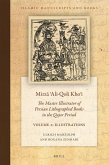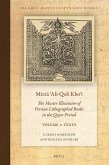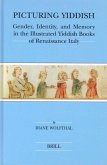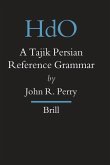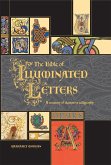This study surveys a distinctive type of the "Islamic" book which has been largely neglected in previous scholarship: the genre of illustrated lithographed books produced in nineteenth- and early twentieth-century Iran. In addition to introducing the history of printing in Iran and surveying the investigated sources, the study supplies basic data on genres of illustrated books, artists active in lithographic illustration, and aspects germane to this particular field of art. The documentation includes bibliographical references for 116 illustrated books in a total of 351 particular editions and 150 plates with several hundred single illustrations. Lithographic illustration in Iran constitutes the legitimate successor to manuscript illustration, both in content and style. Contrasting with the latter's refinement, lithographed illustrations were produced in large numbers and served as a powerful medium of popular iconography.


